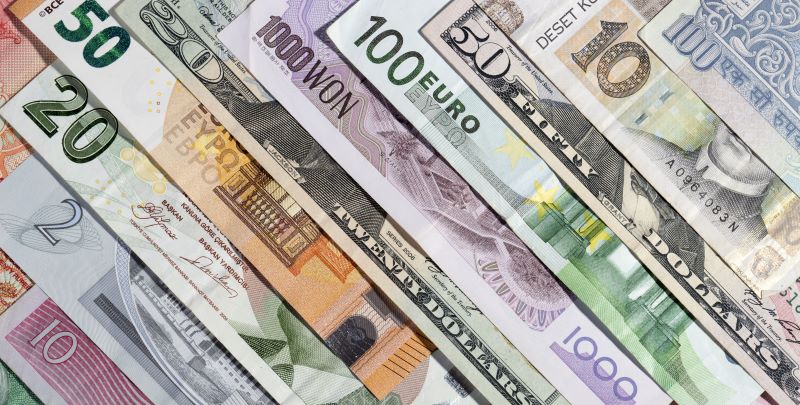Months of innovative work by AfDB staff have resulted in an attractive SDR recycling scheme that overcomes a major hurdle by successfully embodying the reserve asset characteristic. And it will allow leveraging SDRs to multiply their lending power 3-4 times. Now politicians have to step up and commit their SDRs. And Europeans need to show more heart and put aside the legal blockage to recycling outside the IMF.
The African Development Bank (AfDB) took a big step forward in recycling special drawing rights (SDRs) yesterday (February 14), when their staff gave an informal briefing to the Executive Board of the International Monetary Fund (IMF) on their plans to use recycled SDRs as hybrid capital to boost the Bank's lending.
Why is it a big step?
The AfDB presented the first fully worked-through proposal to recycle SDRs outside the IMF. To date, SDRs have only been recycled through the IMF's Poverty Reduction and Growth Trust (PRGT) and Resilience and Sustainability Trust (RST). But those trusts cannot absorb the $100 billion of SDRs that the G20 committed to recycling. So other avenues for recycling were needed.
What took so long?
The G20 insisted that any scheme to recycle SDRs maintain the “reserve asset characteristic” of the SDR—that is, it is low risk, and lending countries can redeem their SDRs on demand. There is no precise definition of the reserve asset characteristic (details here), and it is up to each country to decide whether its use of SDRs maintains the reserve asset characteristic. The AfDB worked very hard over the last year to find a mechanism that IMF staff consider no riskier than recycling through the PRGT or the RST. It also allowed contributing countries access to their recycled SDRs should they urgently need to tap their reserves.
Why is recycling through the AfDB an excellent idea?
The AfDB is a triple-A rated institution by Fitch and Standard & Poors, two of the major credit rating agencies. It is has unrivalled regional, country, and sector expertise and vast experience in lending to African countries.
Countries with excess SDRs can lend them to the AfDB, which will hold them as hybrid capital (see our explanation of hybrid capital here). The AfDB will then leverage that capital by issuing bonds.
With its current gearing ratios, the AfDB's lending capacity will increase by 3-4 times the number of SDRs invested. By contrast, for every SDR invested in the RST, the IMF can lend less than one SDR.
What kinds of loans will the AfDB make?
The AfDB will use the SDRs to put the African continent on the path to meeting the Sustainable Development Goals, focusing on projects supporting climate mitigation and adaptation, green growth, and food security, which will also allow them to combat poverty through the creation of jobs and expand regional integration.
But for this to happen, donors must step up soon!
The technical hurdles to recycling SDRs through the AfDB have been overcome. Politicians in advanced economy countries have no more excuses. They must make the call to recycle their SDRs to the AfDB. There are preliminary indications that the UK will recycle SDR 500 million this way. But for the hybrid capital to work, at least five donor countries are needed. Governments have hesitated to commit without a viable technical solution, but now there is one. Which other countries will step up? Canada? Saudi Arabia? Japan? Norway? Korea? Australia?
What about the European Union countries?
European Union countries appear to be prohibited from recycling through the AfDB. In October 2021, the President of the European Central Bank stated to the IMF’s International Monetary and Financial Committee (emphasis added):
We take note of the discussions on channelling SDRs to vulnerable countries. National central banks of EU Member States may only lend their SDRs to the IMF if this is compatible with the monetary financing prohibition included in the Treaty on the Functioning of the European Union. Retaining the reserve asset status of the resulting claims is paramount. This requires that the claims remain highly liquid and of high credit quality. The direct financing of multilateral development banks by national central banks of EU Member States through SDR channelling is not compatible with the monetary financing prohibition.
But perhaps there is some hope. In her statement to the same committee in April 2022, the President said:
For EU national central banks to contribute to the RST, it is essential that claims on the RST have reserve asset status. According to the preliminary stance of the ECB, as agreed by the Governing Council, the arrangements to ensure that claims on the RST have reserve asset status are acceptable overall – subject to a number of conditions.
The innovative work done by the AfDB has shown that their hybrid capital model maintains the reserve asset status of the SDR much as the RST does.
We hope that European politicians and technicians show some heart and recognize this achievement. They can reinterpret or modify the legislation that appears to be blocking EU countries from participating in this worthy endeavor.
CGD blog posts reflect the views of the authors, drawing on prior research and experience in their areas of expertise.
CGD is a nonpartisan, independent organization and does not take institutional positions.






